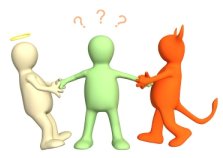Decisions making, is one of the most important dilemmas of the CEO’s, he is the person who has to decide what strategy is going to implement the company, and having two options the right side or the wrong side. There are two types of decisions, the programmed decisions (which need to resolve with no hurries and for certain situations) and the Nonprogrammed decisions (which need to resolve more creatively and faster).
In the decision subject, there is a topic that is the most important to highlight, is the risk that the CEO has to take in the moment that is implemented the decision previously selected. But not all of the CEO’s likes to take risk. There are two types of CEO’s; the risk takers and the risk aversions.
- Risk Takers: They are more creative, accept greater potential for loss and have tolerated greater uncertainty
- Risk Aversions: They are more classic at the time to take decisions; they don’t like to feel uncertainity.
Group decisions must be better, but sometimes it would be complicated to handle all the opinions, for this reason the CEO has to be clear in which situation has to consider the opinion of the employees and which situation has to take decisions by himself, always acting with ethical behavior.
Question:
How can organizations effectively manage both risk taking and escalation of commitment in the decision-making behavior of employees?
First of all the CEO, needs to be sure that the employee is capable to take these important decisions and has to know if the employee feels job satisfaction, these could assurance that the employee has a really commitment with the organization. The results would be positives if the CEO has a good motivation method that makes feel to the employees happy and comfortable.
http://www.decision-making-solutions.com/images/DecisionTypes-Business-Ethics-FigureBeingPulledByGoodAndEvil-iStock_000005504476XSmall.jpg
References:
- Mintzberg, H. & Westley, F. (2001, Spring). Decision making: It’s not what you think. MIT Sloan Management Review, 42(3), 89 –93.
- Nelson, D.L. & Quick, J.C. (2010) OrganizationalBehavior: Science, TheReal Worldand You. South-Western CollegePublication, 7th. Ed.
- Wong, K. F. E., & Kwong, J. Y. Y. (2007). The role of anticipated regret in escalation of commitment. Journal of Applied Psychology, 92, 545–554.




